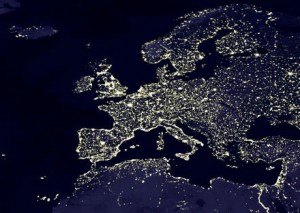 The development of cities has always been a fascinating topic for historians, engineers, and anyone interested in how we live and work. But cities do not live on their own, any more than individual humans do. In the article Megaregions and Mobility, authors Catherine L. Ross and Myungje Woo look at the growth of cities into megaregions that accumulate population, production, commodity trading, and capital on a huge scale. In a globalized world, economic, commercial, and transportation systems are closely linked and interdependent.
The development of cities has always been a fascinating topic for historians, engineers, and anyone interested in how we live and work. But cities do not live on their own, any more than individual humans do. In the article Megaregions and Mobility, authors Catherine L. Ross and Myungje Woo look at the growth of cities into megaregions that accumulate population, production, commodity trading, and capital on a huge scale. In a globalized world, economic, commercial, and transportation systems are closely linked and interdependent.
The article was published in the wonderful The Bridge, a journal from the National Academy of Engineering (part of the National Academy of Sciences).
Although we can talk about global networks, in commerce, information, and other ways global interactions are concentrated in specific regions called “megaregions.” These new economic and geographic units, have been developing for decades. Megaregions are “networks of metropolitan centers and their areas of influence” that have developed social, environmental, economic, and infrastructure relationships, according to the authors.
Megaregions extend beyond metropolitan areas, across geographic and political borders lines, illustrating a rich-get-richer dynamic as more and more people and economic activities are concentrated in them. In the United States, the 10 largest megaregions (seven of which have populations of more than 10 million) represent 80 percent of U.S. economic activity. By 2050, the U.S. population is projected to increase by another 130 million people, which, the authors suggest, will increase the size and density of existing megaregions.

You must log in to post a comment.